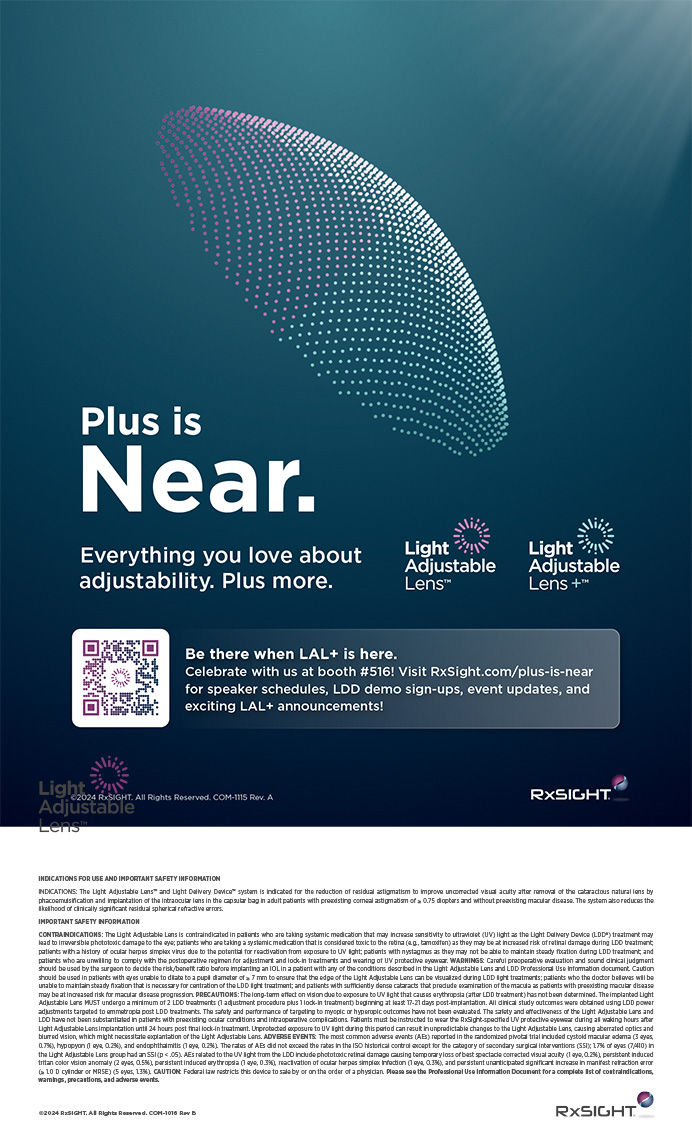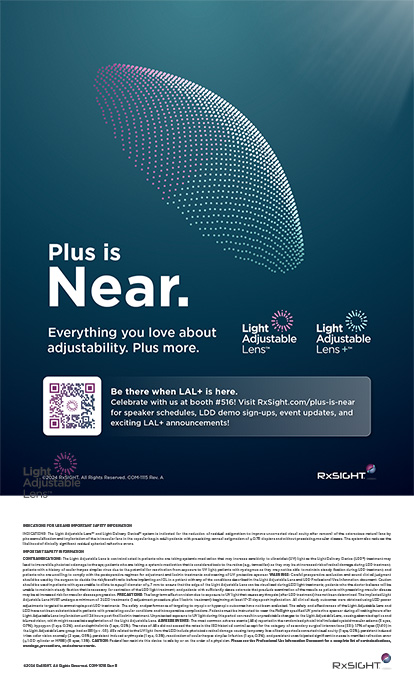At first glance, the financial implications associated with offering presbyopia-correcting IOLs seem rather straightforward. All you need is a calculator to do the math. If you perform 1,000 cataract procedures per year and can get 15% of those patients interested in receiving the lenses, you will implant 150 presbyopia-correcting IOLs. The average selling price is $2,500 per lens, and they cost you about $1,000 apiece (although prices can vary). Multiplying $1,500 times 150 cases equals an additional $225,000 per year.
Despite the economic downturn, the sales of presbyopia-correcting IOLs are growing. In the near future, surgeons may find it detrimental to their practices not to offer this technology. The frequency of cataract procedures will increase as the US population ages (Figure 1). We need to think about what will happen, however, in terms of growth of procedural volume for cataracts beyond the next decade.
Before plunging ahead, take a moment to think about what incorporating these lenses into your practice will entail.
ITEMS TO CONSIDER
Education
Patients will require multiple explanations of the benefits of presbyopia-correcting lenses before they become interested in and pursue them. The process starts with external (media) advertising, which is not common among general ophthalmology practices. However, we have advertised cataract surgery for years and found it to be very effective. A headline like "You will only have cataract surgery once. … Know your options" starts the process. Then, when a patient makes an appointment, we continue with the mailing of literature to outline the available IOLs for the refractive cataract surgery patient. A useful tool, 3D-Eye Home (Eyemaginations, Inc., Towson, MD) enables practices to send Web-based animations to patients via e-mail that explain, for example, how cataract surgery is performed and what they can expect from the various lenses. In your practice's lobby, the educational process continues through informative posters and literature and the use of animation on flat screens that demonstrates the procedure and its benefits.
A presbyopia-correcting IOL counselor is a staff member who is dedicated to discussing the available lenses and how they work. Hiring such a person will save you time but at a cost. Many doctors do much of the counseling themselves. As volume increases, however, it is difficult for a physician to spend the time really needed to help the patient to fully understand the technology. The doctor's time is better used to confirm the patient's interest.
Preoperative Screening
Performing diagnostic tests to determine a patient's candidacy for a presbyopia-correcting IOL takes time, as do setting that person's expectations appropriately and discussing the costs and financing options for the procedure. Patient financing can cost as much as 8%. All of these items represent additional overhead.
Postoperative Care
Patients typically pay more than $5,200 (added to their insurance payment of approximately $3,800) to undergo lens extraction and the implantation of a presbyopia-correcting IOL in both eyes. This surgery does not always achieve the patient's goal. In my experience, many practices have reported that 20% to 30% of patients who receive presbyopia-correcting IOLs require additional surgery, including LASIK, limbal relaxing incisions, YAG laser treatment, or an IOL exchange. At Barnet Dulaney Perkins Eye Center, my colleagues and I reviewed the records of 1,600 patients who received presbyopia-correcting IOLs and quantified the subsequent procedures required to achieve a desired outcome. When we execute a cost analysis of performing additional procedures (eg, LASIK), we calculated the average expense of about $700 per case.
FINANCIAL IMPLICATIONS AT A GLANCE
The $225,000 per year in additional revenue I mentioned earlier does not take into account the costs I have outlined. The marketing budget for collateral materials and animation software discussed totals about $20,000 per year. The annual salary of a counselor is approximately $52,000 per year including benefits; this is an average and varies, but it is important to remember that you get what you pay for, especially when it comes to a salesperson. The expenses associated with enhancement procedures after the IOLs' implantation total $32,000 per year (average cost of $700 per procedure). In addition, a number of patients do not receive the desired result. Based on my experience, a small percentage of patients will want their money back due to unexpected outcomes.
Based on the aforementioned costs, the additional revenue generated by the implantation of 150 presbyopia-correcting IOLs is $111,500 per year—or an average of $743 per procedure or an additional $111 averaged against your total volume. Only with a clear understanding of the financial realities should you decide whether to offer this technology. For 1,000 cataract procedures performed per year, without facility fees, you will probably take home about $250,000 to $300,000, which will amount to a 30% increase in income if you also offer the premium lens technology.
CONCLUSION
What will happen in terms of the future growth of procedural volume for cataracts during the next 16 years? In 2005, the population of adults in the United States older than 65 was 36.1 million,1 and 2.9 million cataract procedures were performed.2 The population older than 65 in 2015 will be 45.5 million (a 26% increase) and 61.9 million by the year 2025 (71% increase over 2005).2 The good news is that you will continue to perform cataract surgery. The annual volume of cataract surgery will grow to 4.9 million procedures compared to current levels that are estimated to be 3.2 million. During the next 16 years, 1.7 million more procedures will be performed annually, and based on current Medicare reimbursement (average), that is $2.7 billion in additional Medicare dollars. It is not certain what will actually happen to cataract reimbursement. The ability to market to patients the added benefit of a refractive result at some point is going to be critical to your ability to stay in practice, much like an optometrist cannot remain financially viable without sales from an optical.
Mark Rosenberg is the CEO of the Barnet Dulaney Perkins Eye Center in Phoenix. Mr. Rosenberg may be reached at (602) 508-4808; mrosenberg@bdpec.com.
- Projections of the Population, By Age, and Sex, of States: 1995 to 2025. U.S. Census Bureau. http://www.census.gov/population/projections/state/stpjage.txt. Accessed June 15, 2009.
- Market Scope US Cataract Market Quarterly Update: Q1-2005 to Q1-2009. Manchester, MO: Market Scope LLC; 2009.


